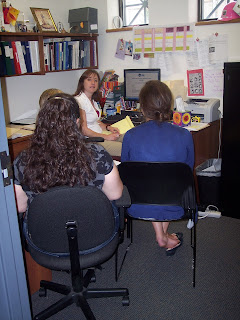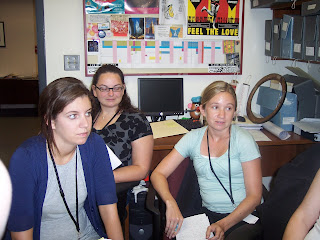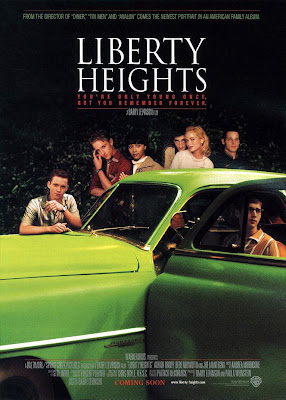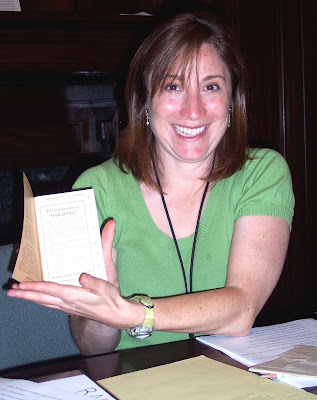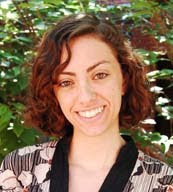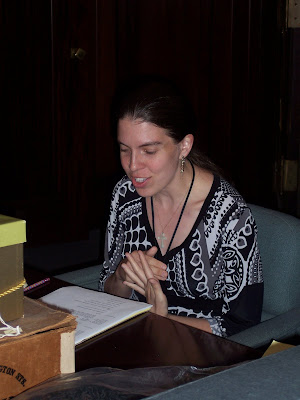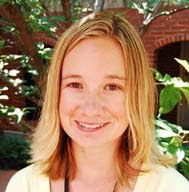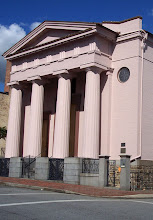
On Sunday, June 6th here at the Jewish Museum of Maryland, we held our annual meeting. But this wasn't just any annual meeting! No, this was the annual meeting of our 50th year! We've been trying to celebrate our jubilee year with panache through special programs (like the re-dedication of Lloyd Street Synagogue in March) and putting just a little bit of extra sparkle on all our regular offerings. Our annual meeting was no different!



One of the special features of this year's meeting was a tribute to past JMM leaders, delivered by Baltimore's own Gilbert Sandler. After sharing a number of stories, Gil thanked all past and present JMM trustees for their dedicated service to and support of the JMM. Following Gil's tribute came our keynote speaker, Marsha Semmel from the IMLS, speaking on the future of museums.


At the end of her talk, Marsha was surprised by the presentation of an Award of Appreciation to the IMLS, on behalf of Baltimore museums. Roland Woodward, president of the Greater Baltimore History Alliance (and JMM trustee) was on hand to present the award.

But before all of these illustrious speakers, the meeting was opened with a welcome from our own associate director Anita Kassof. Her remarks, which follow below, set the tone of the meeting and truly capture the direction of the museum's gaze as we celebrate our 50th year.
 As we began planning for our anniversary year
As we began planning for our anniversary year, we batted around a number of potential taglines. One of my personal favorites, which, unfortunately, didn’t stick, was
“Halfway to one hundred.” What I like about that tagline is that it acknowledges that while anniversaries are an occasion to look backwards, they also offer an opportunity to look ahead. As a history museum, we do a good job of examining the past, interpreting it, and drawing messages and meaning from it. Our exhibitions exemplify our commitment to learning from our collective past: In
Her Inward Eye, Nancy Patz’s works asks us to ponder the significance of memory.
Voices of Lombard Street is a nostalgic journey that explores how community is shaped.
The Synagogue Speaks, our newest exhibition, unearths the mysteries of a building that continues to reveal new secrets every time we dig a little deeper.

Certainly, nostalgia and reflection have their place in our exhibitions and programs, but we would be shortchanging ourselves and our visitors if we only looked in one direction. Our job is also to meet the future head on by embracing new ways to engage and inspire our visitors. To that end—with the help of the under-30 staff at the Museum—we’re diving into the social networking world by
Facebooking,
blogging, and developing an
interactive microsite for our Chosen Food exhibition. And
Tweeting is just down the road. Developing and using these applications has been quite an education for those of us who grew up with manual typewriters and rotary telephones, but it’s clearly the wave of the future and provides wonderful opportunities to engage visitors, younger ones in particular.

Just as I was pondering the role of social media and other new technologies in engaging visitors of the future, I learned that the theme of next year’s conference of the American Association of Museums is “The Museum of Tomorrow.” It seems that, of late, numerous symposia, articles, and online discussions have been devoted to exploring what shape museums will take the twenty-first century.

Not a little anxiety accompanies these musings, as museum professionals—and our visiting public—envision how museums will look in the internet age. Wonderful opportunities await us. But as we enter uncharted territory in our march toward the future, I hope that we don’t lose sight of the value of traditional museums as places of discovery that offer authentic experiences. Sometimes, visitors find things in our exhibitions that surprise even us, as they interpret the authentic—a yellowed document, a snippet from an oral history, the brushstroke on a canvas—through the lens of their own experiences.

So as we celebrate the Museum’s fiftieth and look forward to our next half century on Lloyd Street, it’s critical that we keep in mind, first and foremost, what makes us special. Our two historic synagogues—beautifully restored and interpreted—offer real encounters with material evidence of the past, showing how different people have used and shaped the buildings. Our collections, the largest and most varied of their kind, vividly illustrate our communal past. Our programs and exhibitions invite visitors to engage with real things in authentic settings. The Museum is truly a place of discovery—and of mystery—where visitors can encounter the unexpected. In the process, they may just find out more about themselves.
*All photographs by Will Kirk and Mark Mehlinger.
 Julie: The disaster recovery seminar produced useful information that I didn't know before on how to preserve data in the event of flooding--did you know that dvds, cds and even flash drives should be kept wet and rinsed in distilled water? After it air dries, the data may not be lost after all.
Julie: The disaster recovery seminar produced useful information that I didn't know before on how to preserve data in the event of flooding--did you know that dvds, cds and even flash drives should be kept wet and rinsed in distilled water? After it air dries, the data may not be lost after all.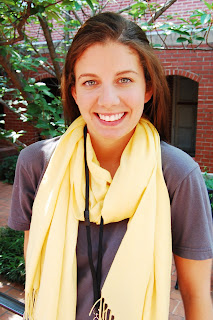 Brittney: I participated in a webinar about disaster planning, specifically about electronic records. I think it was an important webinar because even though the museum has an extensive disaster plan, salvaging electronic records is not currently included. The webinar discussed developing a disaster plan as well as disaster recovery, all very important topics, especially because the museums records and collections are going to increasingly be electronic.
Brittney: I participated in a webinar about disaster planning, specifically about electronic records. I think it was an important webinar because even though the museum has an extensive disaster plan, salvaging electronic records is not currently included. The webinar discussed developing a disaster plan as well as disaster recovery, all very important topics, especially because the museums records and collections are going to increasingly be electronic.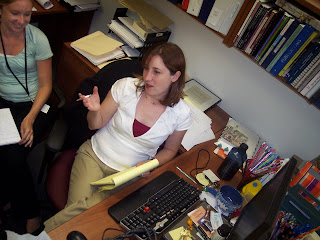
 Kristin: I attended the "Electronic Records and Disaster Planning" webinar with Intern Wrangler Jobi, and two fellow interns. It was very informative and reminded me of some of the issues covered in a Digital Preservation class I took this past Spring semester. I learned that it is important to have a Disaster Recover Plan for electronic records because many types of storage media are not very stable.
Kristin: I attended the "Electronic Records and Disaster Planning" webinar with Intern Wrangler Jobi, and two fellow interns. It was very informative and reminded me of some of the issues covered in a Digital Preservation class I took this past Spring semester. I learned that it is important to have a Disaster Recover Plan for electronic records because many types of storage media are not very stable.
